The following Articles and Images have been added to the database
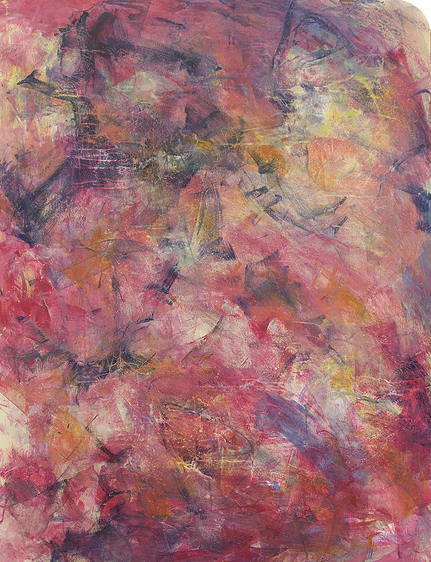
Almonte’s Sivarulrasa Gallery has three shows planned for August — one in each of their three distinct gallery spaces.
From July 20 to August 26, they are pleased to present Catherine Gutsche: Improv, an installation in Gallery II by Ottawa-based artist Catherine Gutsche that explores themes of improvisation in nature and in her practice as an artist. The show features seven new paintings in acrylic and mixed media, from the exuberant Scarlet Bergamot to the mysterious Salmon Run. The installation brings elements of the artist’s environment into the Gallery. Leaves and twigs are suspended from the ceiling in a Twig Rain. River rocks and found objects form a Rust River as water and time transform rocks and oxidize metals. A slice of a pine tree that had to be removed near the artist’s home, as it was beginning to die, is juxtaposed with shards of glass. There will be a Virtual Vernissage/Artist Talk on Zoom with Catherine Gutsche on Wednesday August 3 from 7–8pm.
From July 27 to September 2, Karen Haines: En Plein Air will run in Gallery III. This exhibition features twenty new paintings, all on small panels, completed en plein air by the Edmonton-based artist. Drawn to the looser energy of painting outdoors, Haines uses small wood panels and a limited colour palette to quickly sketch the patterns of light and dark. Traveling throughout Alberta, and contending with all the challenges of painting outdoors, her works capture direct light, reflected light, and diffuse overcast light. There will be a Virtual Vernissage/Artist Talk on Zoom with Karen Haines on Wednesday August 10 from 7–8pm.
Jihane Mossalim: About Time will run in Gallery I from August 3 to September 16, a solo exhibition of new paintings by Montreal-based artist Jihane Mossalim. In this new body of work the artist explores past, present and future, as well as the illusion of time. The paintings are inspired by old family pictures and strangers’ discarded photographs. “Photographs of people have always fascinated me,” she says. “As a child, I often spent hours rummaging through old albums and shoe-boxes full of family photos.” Her scenes are carefully selected, noting faces that she wants to “bring back to life.” The resulting paintings appear foreign and familiar at the same time, evoking an eerie intimacy. In this exhibition, the artist has also added an element of “augmented reality” which will be accessible via an app on a smartphone! Meet Jihane Mossalim at an in-person vernissage on Saturday August 20 from 2–4pm. Please note: the Gallery is voluntarily limiting the capacity for in-person events to 50% of their posted capacity, so there will be a maximum of 30 people (including Gallery staff) at any one time at this event — registration will be required. Please email <info@sivarulrasa.com> to register for either the first hour or the second hour of the vernissage, or for either of the Zoom events.
All shows can be seen in-person during regular Gallery hours at 34 Mill Street in Almonte: Tuesday through Saturday from 11am to 5pm, and Sunday from 11am to 4pm. Visit <sivarulrasa.com> for more information.
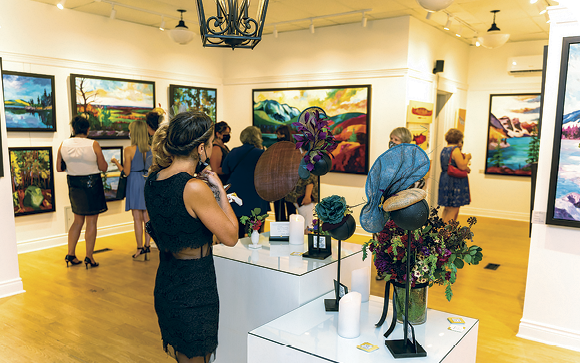
The exclusive gallery event of the year, A Midsummer Night in Perth returns to beautiful downtown heritage Perth. On Saturday, August 13 you can immerse yourself in the inspiring world of art meeting fashion and food!
Come to the Katherine Muir Miller Gallery, where they will be rolling out the red carpet for a one-night-only exclusive event. Tickets are on sale now for admission to an elegant evening filled with art, hats, music, fashion and a delicious selection of wines, beers and sweet and savoury treats.
“I was so amazed at the incredible response we had at the very first event we held in 2021. Since then, the Gallery, Queen Bee Millinery and Gather restaurant have celebrated two years in business — something we never thought we would be able to do after having opened during the middle of the pandemic,” explains landscape artist Katherine Muir Miller. With summer in full swing and people traveling to Perth for a unique destination experience, the timing is right for these entrepreneurs to once again present their art and designs in a grand fashion.
“Ranelle from Queen Bee Millinery is doing another amazing collection of wearable art, designing and creating elegant, couture headpieces that are matching several of my pieces that will be on display in the gallery. I am just thrilled with how she has interpreted my art through her own creative medium,” adds Katherine.
Ranelle Larocque is an accomplished milliner who has taken her love of fashion and art to the next level. Her designs and handcrafted bespoke fascinators, hats and headpieces have been worn all over the world. Opening Queen Bee Millinery at the outset of the pandemic in the spring of 2020, she has honed her craft and serve her clientele with ready-to-wear and custom-made designs.
“Millinery sounds like an old-fashioned word, but the making and wearing of designer headwear is found everywhere in modern high fashion, as well as in everyday life,” says Ranelle. “If you have a head, you can wear a hat!” At the gallery event, Ranelle says that you will see more haute couture interpretations of Katherine Muir Miller’s art in her designs. “You can wear the headpieces that I will have on display, but they will be for someone going for a very special, dynamic look”.
In Ranelle’s millinery, located at 16 Gore Street East, you can find a whole variety of hats; from high-fashion fascinators that you can wear at the Queen’s Plate or Kentucky Derby, to cloche-style wool hats that will perfectly complete your winter outfit. “The range of ways you can express yourself through a piece of wearable art is limitless,” explains Ranelle, with the broad smile that welcomes everyone into her boutique Tuesday through Saturday.
On collaborating with Katherine Muir Miller, Ranelle was “over the moon” at having the opportunity to work with such a skilled artist. “I am so inspired by Katherine’s art. The rich and complex colours, the inherent movement of the landscapes… when I look at her art, I find myself transported along the textures of each of the brush strokes. I was so excited when she asked me to collaborate with her that I immediately began to think of new designs for headpieces that would reflect the unique aesthetic of her art. I can’t wait to present these pieces during the event in her beautiful gallery!”
Katherine Muir Miller is a full-time artist whose studio is at her home in Ottawa, with her gallery opening in Perth in 2020. Katherine’s fascination with colour is a driving force in her paintings. Her connection with nature and extraordinary sense of vibrant colour in her beloved Canadian landscapes are reflected in her bold, colourful, playful interpretations on canvas.
Katherine’s pieces capture memories of cross-Canada travel. Vintage elegance can be seen in her impressionistic realism pieces of recognizable landscapes. Katherine wants the viewer to feel movement, mood and simplicity in her work. “It’s all about the story behind the painting,” she enthuses, “that’s what inspires me”.
“We chose the name ‘A Midsummers Night in Perth’ because we wanted to pay homage to the peak of the colours in the Ontario landscapes and to be able to reflect on the summer that we have had so far, with a view to the hope for a future where we can put the pandemic behind us,” explain Katherine and Ranelle, who are excited by the community response and thrilled to make this an annual event.
As supporters of local businesses, they will also be featuring delicious gourmet treats form Gather restaurant. Located just down the street from the Gallery, at 40 Gore Street East, James and Kerri from Gather will be providing delicious savoury and sweet canapés throughout the evening. On their website <gatherinperth.com>, they talk about their values: “To spend meaningful time with each other alongside the simple pleasures of modern, wholesome, comfort food”. Katherine and Ranelle are excited to welcome them back for a second year!
Katherine also wants to thank the Downtown Heritage Perth BIA for their support through the Collaborative Event and Marketing Grant program.
For more information on A Midsummers Night in Perth, please visit <katherinemuirmiller.com, <queenbeemillinery.ca> or <gatherinperth.com>, or follow them on Facebook and Instagram. Tickets are $25 per person and can be purchased at their locations or at Tickets Please (ticketsplease.ca or 485–6434).
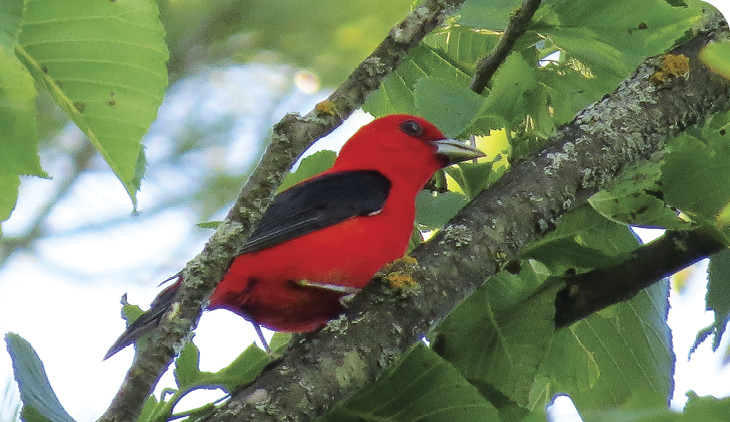
I will never forget the day I saw my first scarlet tanager; it was June 2010, during an early morning walk. I heard a bird singing from high up in the canopy of a tree, a hoarse and raspy whistle, best described as a robin singing with a sore throat. As I was carefully scanning the high branches of the tree, I caught a brief flash of fiery red. Several minutes later the bird revealed itself to me in all its glory. The American naturalist Henri David Thoreau said it best: “The tanager flies through the green foliage as if it would ignite the leaves.”
Most if not all birders would agree that the male scarlet tanager (Piranga olivacea) is a stunning songbird in the forests of Eastern Ontario during summer. His crimson red body is emphasized by inky-black wings and tail. He is medium-sized and slightly stubby, with a thick, rounded bill. His favourite spot is high up in the trees and that makes him frustratingly hard to find, despite his scarlet livery.
The female is even more difficult to spot; she is yellowish-green with dark wings, perfect camouflage among the tree leaves. Her song resembles the male’s but is softer and less raspy. She answers the male’s song and also sings while she is gathering nesting material. Both male and female also have a very sharp and distinctive “chick-burr” call, which resonates through the forest.
Scarlet tanagers arrive in Eastern Ontario in early May. Their preferred habitat is deciduous forest, mainly where tall oak trees are present, but they also frequent maple, beech, and other trees. They spend most of their time foraging for insects in the foliage, including caterpillars, moths, beetles, wasps, bees, aphids and many others. They also like berries, such as blackberries, raspberries, serviceberries, mulberries and chokeberries.
During his courtship display, the male hops around on a branch while the female sits above him. He lets his wings hang down and spreads his tail, accentuating the contrast between their jet-black colour and his vivid red body. The female is the sole nest builder. In three to four days, she creates a shallow cup made of twigs, grasses, plant stalks, bark strips and pine needles lined with fine grass and rootlets. She builds it on a horizontal branch, well away from the trunk. She usually lays four eggs and incubates them by herself for twelve to fourteen days. Both parents feed the babies, which leave the nest nine to fifteen days after hatching; they are tended by both parents for about two more weeks. Then the family disperses before migrating.
After breeding, adult males molt to female-like plumage, but with black wings and tail. In the fall, immature males resemble the females, with olive-yellow body and darker olive wings and tails. The following spring, the young males start showing some colour, with variations of yellow to light orange. It takes them a couple of years to display the full breeding plumage of an adult.
Although their main diet consists of insects with a few berries thrown in, scarlet tanagers have also been known to appreciate orange slices, either nailed to tree branches or on an orange feeder designed for orioles. When they first arrive in early spring, there may not be too many insects to feed on; if they should come across a backyard offering orange slices, scarlet tanagers might very well take advantage of it.
The North American Breeding Bird Survey reveals the scarlet tanager population has declined by about 14% between 1966 and 2014. Tanagers are sensitive to habitat fragmentation and since their primary habitat is the interior forest, the clearing of trees due to development may affect their population over time. For instance, in some fragmented landscapes, tanagers’ nests are in greater danger of being parasitized by brown-headed cowbirds — where the female cowbird gets rid of a tanager egg and replaces it with one of her own. To protect the scarlet tanagers, researchers recommend preserving and restoring mature forest habitat for migrating and breeding.
Just like so many other mammals, insects, reptiles and birds, scarlet tanagers need to be protected and even treasured. It would be an immense loss if those magnificent birds disappeared one day, and with them their ability to “ignite the leaves” with their astonishing colour.
While it is true that scarlet tanagers are notoriously hard to spot in the dense foliage where they like to forage for food, never ever give up trying to spot one. Be patient and persistent and follow that raspy song. I promise you will not be disappointed, and just like me you will never forget your first sighting of that red-letter bird.
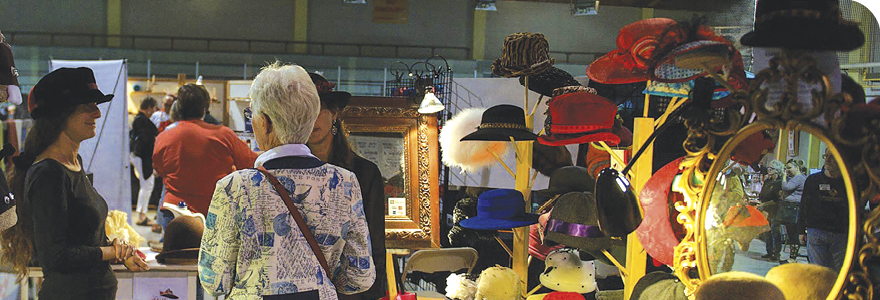
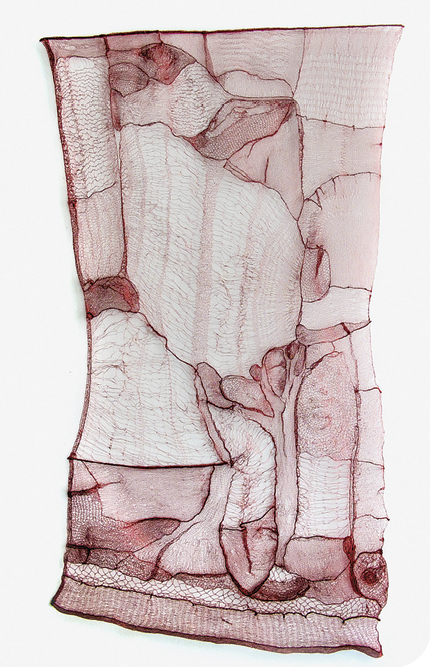
Come out to the friendly town of Almonte on September 10 and 11 for the Mississippi Valley Textile Museum’s 27th annual Fibrefest. This year’s festival is taking place at two locations — the Almonte Community Centre and the Textile Museum. Admission to Fibrefest is $7 per day, which gets you access to both sites. Local guilds will demonstrate spinning, knitting, weaving, rug hooking, lacemaking, smocking and quilting. Vendors include finished fibre goods and textile-related supplies from across the province, as well as quilt shops and alpaca farms.
This year, several hands-on workshops, lectures and a performance will be taking place in conjunction with Fibrefest. This is your chance to roll up your sleeves and get felting, weaving or hooking with talented fibre artists and vendors. Workshops run Thursday through Sunday (September 7–11) at both the museum and the community centre, and registration fees include free admission to the festival. Advance registration is required and some workshops may need you to bring some of your own supplies, so do check <almontefibrefest.ca> and sign up early to avoid disappointment!
During the two-day festival, explore the new permanent history exhibit at the museum called Material World on the Mississippi, which interprets how a piece of wool fibre becomes a piece of finished cloth and includes industrial machines used throughout the process as well as mill worker accounts of working and living in a textile mill town.
Also on display this year is the featured exhibit In the Forest, an art installation by Kai Chan. Kai Chan was born in Chung Kiang, China and immigrated to Canada in 1966. He graduated from Chung Chi College in Hong Kong and completed a degree in interior design at the Ontario College of Art. His work is textile-based and three-dimensional.
Michael Rikley-Lancaster, Executive Director/ Curator of the museum, explains that: “It has been a dream of mine to curate an exhibit of the work of artist Kai Chan for twenty years. I am transfixed by the way Kai is inspired by spaces and transforms them using inspiration within the space. The artist has been inspired by the pillars in our gallery to create his interpretation of a forest (these pillars were at one time trees) with suspended threads (once a textile mill) from the gallery’s ceiling. I have seen many installations of Kai’s work in the past, and they’ve always left me in awe.”
To register for workshops or obtain additional information about Fibrefest, please visit <almontefibrefest.ca>.

Families giving birth at the Almonte General Hospital are now benefiting from three new fetal heart monitors — thanks in part to funding from the annual Run/Walk event held each fall. The three state-of-the-art units combine the abilities to monitor and trace the heart rates of both baby and mother, record the information which can then be shared with the delivery team, and offer several other options for gathering real time information when necessary. The monitors cost $48,000.
“These new machines are replacing older versions of fetal monitors and blood pressure machines used to monitor both mom and baby. They record accurate live time vital signs to allow nurses to have more time for labour support,” says Lynn Heath, Manager of the OBS unit which delivers close to 400 babies per year. “The staff really love the new monitors because they allow them to be more hands-on.”
All of the funds used to purchase this new equipment were provided to the Hospital by the AGH FVM Foundation. Several large donations were received towards them, and monies collected from the AGH Run/Walk for Women’s Health held last September were also used.
“Most people are still surprised to learn that although the operation of the Hospital is funded by the Ontario government, money is not provided to purchase replacement or new equipment,” explains Julie Munro, chair of the Hospital’s annual Run/Walk for Women’s Health. “That’s why we need community members to get involved in our annual fundraiser.”
The 2022 AGH Run/Walk, presented by Canadian Tire (Carleton Place), will take place from September 3–10. Routes include 3km, 5km, and 10km distances, with timing for competitive participants. Runners and walkers can participate virtually during the week or come out on event day — Saturday, September 10. The start and finish line will be behind the Hospital. Activities get underway at 8am and wrap up at noon. Post- and pre-event activities include breakfast, musical warm up and post-event food, music and awards for best times and most funds raised individually and as a team.
In honour of the Birthing Unit, families are encouraged to participate, particularly as a team. Children’s activities, including a multi-generational relay race, will also take place.
Please go to <almontehospitalfoundation.com> to find information on registering, sponsoring and/or volunteering. Register before August 1 to save on registration fees!


Hello! Miss Mills here — your friendly puppet reporter in the Friendly Town of Mississippi Mills. And I am so happy to be here! Because it is AUGUST!
August used to be my favourite month of the year. Sure, mainly because all my puppet friends, old and new, came to town, but also due to it being full of fun in the sun! But then we stopped hosting puppets, and then Covid stopped everything else. And now, after years of what I shall call “The Dark Times”, the sun is finally shining on Mississippi Mills again!
The month begins with a holiday Monday — always a good thing, whether you socialize, relax, or hopefully get paid extra to work. I recommend you take the opportunity to rest up, or maybe visit your local shops, because on the next Saturday (August 6) the Naismith 3 on 3 Basketball Tournament takes over the streets of Almonte (well, Bridge Street, anyway… in front of the arena). If you haven’t already registered I’m afraid you are out of luck, but go and watch this year’s match-ups to learn tips and tricks for next year! There are teams of all ages playing — why not select a couple to cheer on! Nothing makes me happier than seeing basketball played in the streets of James Naismith’s hometown… well… maybe there is one thing…
PUPPETS!! Yes, after much proprietary and propuppetary discussions, frequent fact-checking with the funnest of fundraisers, considering the coronavirus conundrum, and waffling over the 5Ws (Whether We Will Withstand Weather)… IT’S GOING AHEAD! The Puppets Up! International Puppet Festival is back, baby! So better log onto <puppetsup.com> to buy your tickets and start planning which shows you want to see. As per usual, you pay one price for the entire day and get to see as many shows as you can fit in, assuming you get in line before they’ve reached capacity, so get there early! The action has shifted this year due to road work on Mill Street, so the venues are all in the area between the Old Town Hall and the Library. And yes, street performers, the Kids’ Craft Tent, and the much-loved parade will be back on Saturday and Sunday.
On August 20, Almonte takes a rest and Pakenham takes up the slack by entertaining guests young and old, city and country, from near and far, at the annual Pakenham Fair! It seems to be quite a hush-hush affair — I couldn’t see anything about it online — but drive on down on the 20th to visit the fair that’s the best kept secret around. They already have Scoops Ice Cream and Penny’s Fudge Factory and 3 Apples gluten-free bakery, so any trip to Pakenham is bound to be a success!
And then… guess how we finish off the month in Almonte. Guess! OK — here are a few clues: deep fried food and alcohol are approved of, throwing things is encouraged, and everyone looks forward to hearing old bags scream in unison. No — it’s not a Girls’ Night Out — it’s the North Lanark Highland Games! No matter how Scottish you are — whether your great-great-gran hailed fa Edinburgh, or you have a bo’le o’ whisky in your cabinet, or you love seeing telephone poles fly through the air (sans storm), or simply love a good plaid (and what Canadian doesn’t?!), these games are for you! They officially begin at 9am on Saturday, August 27, though the crowd grows at 1pm when the action is in front of the grandstand: opening ceremonies, followed by the athletics competitions and later closing with the massed bands. Wondering about the wee ones? The Children’s Activity Centre will have face painting, colouring, and dress-up from noon to 3:30pm, and kids can even compete in their own free Games! Registration is from noon to 12:45pm. Find more information at <almontehighlandgames.com>.
For all activities, even though they’re mainly outside, if you want to wear a mask, please do so, and if you don’t then you don’t… Just stay hydrated in the heat and enjoy yourself in the Friendly Town, where hopefully the only thing that’s contagious is a smile!

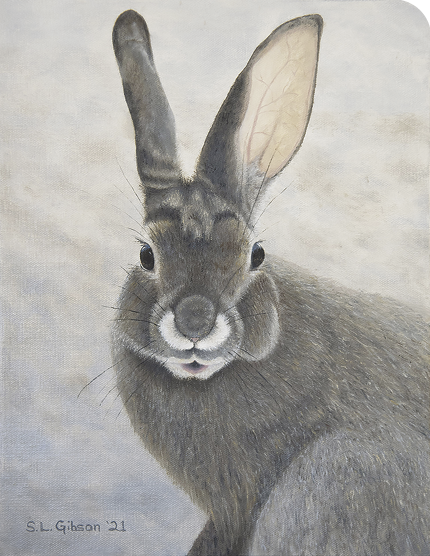
August has been described as “the kindest month” — soft days, sunshine and a time for slowing down after the frantic rush of a typical Canadian summer and before the inevitable arrival of cooler weather. August is a perfect month for day trips to charming destinations, such as beautiful Westport, Ontario, with its thriving art community, unique shops, restaurants and accessible waterfront on Upper Rideau Lake.
Speaking of Westport, after two long years, one of eastern Ontario’s premier art shows, Paint the Summer, is back in a new venue, the Westport Arena, on the fourth weekend in August. Presented by the Rideau Lakes Artists’ Association (RLAA), this show and sale will feature fine art across a wide spectrum of styles from landscape to abstract, from still life to whimsical illustration.
Everyone is invited to come out and enjoy new work by more than thirty experienced artists working in acrylics, oils, watercolour, pencil, fibre, multimedia and batik. All exhibiting artists will be on-site and available to chat with guests, answering questions about techniques and sharing their inspirations and creative challenges.
Paint the Summer 2022 happens on Saturday, August 27 and Sunday, August 28 from 10am to 4pm at the Westport Arena, 37 Spring Street (at Concession). Admission and parking are free.
The Rideau Lakes Artists’ Association started as an idea that sprang from a watercolour class held in Westport back in 1993. The association itself was established in 1994 with a mission to inspire and support member artists at all levels by expanding their painting knowledge and skills. In the years since then, RLAA has grown in membership and scope, offering shows, paint-ins, workshops and demonstrations. The association hosts monthly general meetings that feature guest speakers from a variety of disciplines: artists, framers, gallery owners, suppliers, print makers and more.
Mark your calendars for Paint the Summer — come for the beauty and variety and stay for some stimulating conversation. Who knows, you just might fall in love with a stunning original and decide to take it home!
For more information about RLAA, please visit <rideaulakesartists.com> or find them on Facebook @rideaulakesartists.

After missing two years, the Ottawa Valley’s grooviest community festival is back!
On August 5 to 7, everyone is welcome to the Killaloe Craft and Community Fair. Established in 1976 by back-to-the-land hippies and draft-dodgers, the Fair is a volunteer-run non-profit outdoor festival featuring music, workshops, vendors, kids’ activities, camping, fabulous food and much more. With something for everyone, the Fair is a truly intergenerational event that takes pride in being an inclusive gathering that builds community connections.
Located on a beautiful site with rolling hills and tall white pines, it is the perfect place to spend a weekend with friends and family. 46 years after the first event, there is still a magical atmosphere, and many consider it to be the highlight of their summer.
This year’s event features some amazing live bands including Lindsay Barr (Peterborough), Moskitto Bar (Toronto), FoOlish (Montreal) and Ska Soundsystem (Montreal). Electronic music is a recent addition to the event with DJ performances in the afternoon and into the night.
Didn’t get into Blue Skies? Come on out to Killaloe to make memories and build community connections! For more details, please visit <killaloefair.ca>.
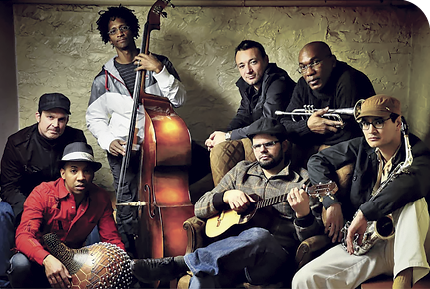
On Friday, August 19, The Cove Inn in Westport will be transformed into a Caribbean dance hall as Kobo Town comes to share their “intoxicating blend of lilting calypsonian wit, dancehall reggae and trombone-heavy brass,” (The Guardian) and a “unique, transnational composite of rhythm, poetry and activist journalism,”(Exclaim!).
Founded and fronted by émigré Trinidadian songwriter Drew Gonsalves and based in Toronto, this JUNO-nominated band has introduced their distinct calypso-inspired sound to audiences across the world. At once brooding and joyous, intensely poetic and highly danceable, Gonsalves’ songs betray deep roots in Caribbean folk music, while the band delivers them with an indomitable energy that has earned them a considerable following far beyond the niche of world music enthusiasts and calypso fans.
Kobo Town is named after the historic neighborhood in Port of Spain where calypso was born amid the boastful, humorous and militant chants of roaming stick-fighters. Situated near the fishermen’s wharf, the area was a site of constant defiance and conflict, a place where sticks and stones, songs and verses clashed with the bayonets of colonial rule.
Gonsalves grew up in a middle-class neighborhood in Diego Martin, a town just outside of Trinidad’s biggest city, Port of Spain. His mother is originally from Québec City, and met Drew’s father while on vacation in Barbados where he was visiting family. A few days later they were engaged, and she came to Trinidad where Gonsalves was born. “In Trinidad we were surrounded by calypso, but like most kids of my age I was not interested in it,” Gonsalves recalls.
When he was 13, Drew, his mother and his siblings left Trinidad for Ottawa. The sudden move to a new (and cold) world where he didn’t fit in led Gonsalves to cultivate a deep nostalgia for the land of his birth. “When I first returned to Trinidad I was eighteen, and I went back to visit my father for the summer. Going back with older eyes, I was more able to place in context all of the things that I took for granted when I was growing up.”
“On that first trip home my father took me to Lord Kitchener’s Calypso Revue tent,” remembers Gonsalves. “I was blown away by the cleverness and the wit of these calypsonians and also their engaging interplay with the audience. I had never experienced anything like it, and from that point on, calypso was always on my mind.”
Gonsalves started writing his own calypsos and visiting calypso tents every time he visited Trinidad. In 2004, he put together Kobo Town with some fellow Trini expats in Toronto. The band’s 2006 début Independence quickly made the band a crowd favourite on the festival circuit. When Gonsalves was introduced to Belizean producer Ivan Duran, the two musicians found a shared desire to revive the folkloric music of the West Indies by taking it in new creative directions. Their collaboration led to 2013’s Jumbie in the Jukebox, which was celebrated by critics at home and abroad.
The band’s latest release, Carnival of the Ghosts, continues to redefine calypso music and pushes the boundaries of the Caribbean sound. Behind the running social commentary and satirical mood, this is a collection of songs about the human condition.
According to Gonsalves, “A few years ago, I was riding the metro in Paris to a recording session when at one stop an old fiddler stepped into the subway car and regaled its passengers with a medley of rousing tunes. He played his jigs and reels with great technical dexterity and a tasteful dramatic flair, dancing and tapping his feet all the while. For all his effort and ability, no one even looked up. In fact, so completely was he ignored that he seemed to me like a ghost out of the past. I imagined that in his grey cap and overcoat, he was indeed a spirit come back to playfully tease us out of our dull and joyless modernity. The contrast between this smiling, dancing fiddler and the lifeless crowd of us on that subterranean train made me think many thoughts: of the sense of wonder and how easily it fades among the worries and cares that beset us all; of how important it is to rekindle it and to remain open to the spontaneous moments of grace which will intrude upon the fixed habits and routines of our lives if we will only let them.”
Rekindle your enthusiasm for the spontaneous by spending a glorious summer evening dancing to the delightful calypso sounds of Kobo Town at The Cove. Tickets for the dinner and show are $80. Reservations only. Call 273–3636 or visit <coveinn.com>.
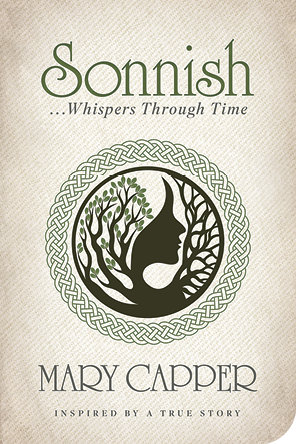
Mary Capper is a retired administrator living in Carleton Place. She is a history buff and self-described sleuth, particularly when researching the hidden truths behind her own ancestry and genealogy. While doing that research, a picture emerged of a strong, courageous, and resilient woman who did not resemble the grandmother she knew as a child. Sadly, Capper only remembers the broken version of this incredible woman: a miserable old curmudgeon who was often referred to as “the old battle-axe” and for good reason. Piecing together her story became a labour of love for Capper, who was inspired to write Sonnish … Whispers Through Time to commemorate the grandmother she came to know and appreciate. She hopes to encourage dialogue between generations to preserve stories and familial histories.
Ms Capper shares a great number of similarities with her grandmother — she is a wife, mother and grandmother, an accomplished singer and is proud to have served in the Canadian Armed Forces. She will be hosting a book launch for Sonnish on Saturday, August 6 from 2–5pm at the Carleton Place Legion, located at 177 George Street. Refreshments will be served, and you can have your book signed or purchase a copy there. Find more details at <marycapper.com>.

Colleen Gray is of Mi’kmaq, Acadian and Irish descent who practices her culture daily. She is also a fulltime artist and volunteer running Art for Aid — an organization that has worked to put art supplies into remote Indigenous schools in Canada for over ten years. Colleen works with various media on synthetic paper and is excited to help others explore this diverse and unique art form. The materials can be an expensive investment, so lessons will allow someone to see how they feel about this new artform.
Over the summer, Colleen has booked space in Sarah Moffat’s S.M.art Gallery in Carleton Place, where an extensive collection of her work will also be available to view and purchase. In addition to offering lessons, Colleen is also inviting people to come and paint bookmarks on “free paint nights”. Watch for these free drop-in events to be announced on Facebook and Instagram (Colleen Gray Art). This is an excellent opportunity for you to test drive synthetic paper and watercolour without a full lesson commitment. The suggested age range to paint with this medium is 13 and up.
Lessons are $75 per person and all materials are supplied. Participants should bring two large pieces of cardboard to take their work home (maximum 10”x20” sheets will be used). The lesson area is well ventilated with plenty of space for lots of people. Please bring your snacks. There is a full kitchen available. Sign up for lessons by email at <colleengrayart@gmail.com> using the password “mineral”. If you would like to give art lessons as a gift, Colleen can create a beautiful gift certificate to present.
Lessons in watercolour on synthetic paper will take place on August 7 and 9 from 12–4pm. Lessons in watercolour and alcohol inks on synthetic paper will take place on September 9 from 5–9pm, and on September 10 from 12–4pm.
Colleen is also excited to host an Art Talk with a Q&A about Indigenous spirituality in art and how it represents the world we live in. This free event will take place on August 18 from 6:30–7:30pm. The live art pieces will be used for this session, along with a PowerPoint presentation for visual support. Refreshments will be provided, and all are welcome to attend.All lessons and paint nights, as well as the Art Talk, will take place at S.M.art Gallery, located at 50 Bennett Street, Unit 1. Find more information about Colleen at <colleengrayart.ca>, and about Art for Aid at <artforaid.ca>.
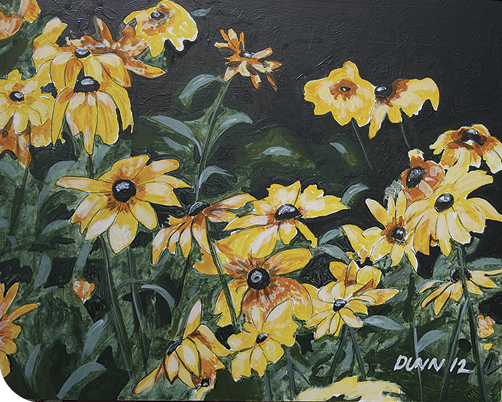
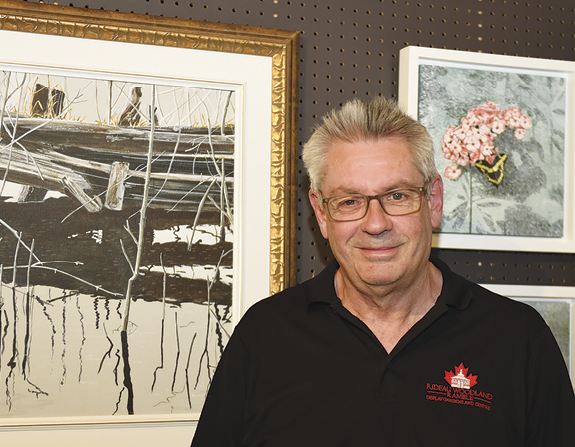
Art… and Soul
Sometimes it’s tempting to think certain people’s lives are preordained. When a kid who loves to draw just happens to luck into marvelously supportive mentors, it’s no wonder he becomes an artist. When Dave Dunn was only six or seven, his public-school art teacher, Grace Murray, encouraged him wholeheartedly by praising his watercolour painting of a sunset in front of the whole class. Then he stumbled into the amazingly good fortune to have Canada’s beloved naturalist and painter, Robert Bateman, as his geography and art teacher throughout high school. It was an early epiphany — Dunn states simply, “It changed my life.”
His paintings, like Bateman’s, pay homage to nature. Many of his works feature birds; flowers are another favourite subject, and other familiar outdoor scenes confirm his affinity with the natural world. His heartwarming portraits of dogs leave no doubt as to his deep affection for and connection with them. Each painting is an invitation to open your eyes to the natural beauty that surrounds us but too often goes unnoticed.
As he explains on his two-minute video at <daviddunnart.com/daves-2020-video>, Dave strives to create a painting that combines magic realism with a hint of impressionism, while introducing a bit of the abstract through the juxtaposition of foreground and background elements. He refers to it as “a trick of the mind’s eye,” and his works succeed in focusing your attention on the gifts nature offers so abundantly. As any nature photographer will attest, it is infinitely rewarding to learn to really look and see.
Like his inspirational teacher, Dunn now lives a life dedicated to bringing nature into people’s lives. He and his horticulturist partner, Rob Caron, have created an oasis of natural beauty near Merrickville. Their acclaimed garden centre began as their response to the unforgettable ice storm that ravaged their country property in 1998. Faced with a wide swath of destruction from trees felled by the weight of almost 100mm of ice pellets and freezing rain, they conceived and began to create Rideau Woodland Ramble. It has been quite an achievement. Since its inception in 2000, the Ramble has been chosen the Number 1 favourite gardening establishment in all of Eastern Ontario by the readers of the Eastern Ontario Gardeners Tour Guide, and featured in Canadian Gardening Magazine as one of Canada’s top 20 nurseries. In 2015, the Ramble was named Canadian Garden Centre Destination of the Year by the Canadian Garden Council. In 2017 they were named a Canada 150 Garden Experience. And now in 2022, in Canada’s current “Year of the Garden” publication, they are thrilled to appear on page 58! Not bad for two guys’ response to an ice storm.
The gardens are the result of Dave’s and Ron’s long-term dream to share their gardening experiences with other gardeners and collectors, and to continue exploring rare plant material suitable for the Ottawa area. Today the six major garden areas are interconnected by trails and walkways, encompassing a delightful pond that is home to a profusion of wildlife. There is a Totem Trail that rambles into the pure woodland, and a garden centre anchored by a glass-enclosed gazebo. Their eclectic collection of whimsical and superb outdoor art gilds the lilies. As icing on the incredible vegetarian cake, in 2012 they added a Pavilion gateway to one of the gardens that features the Garden and Wildlife Art of Dave Dunn. What a perfect setting.
The Journey
Learning that Dunn grew up in Lively, ON, on the outskirts of Sudbury, makes me wonder if deprivation can take some credit for his lifelong passion for natural beauty and environmental stewardship. In addition to the barren moonscape devoid of vegetation in his youth (the Sudbury Basin is a roughly elliptical crater about 60km by 30km, once used by NASA to train astronauts to walk on the moon), Dave remembers air raids sending him home from school to stay indoors to avoid the harmful airborne emanations from the INCO mine where his dad worked as a research chemist.
Dunn describes himself as always needing a challenge. His first major one was dealing with his parents’ horrified response to his announcement that he was going to use his generous Grade 13 scholarship from INCO to go to art college. A practical compromise was eventually worked out, and Dave became President of Student Government, managed the swimming pool and was a lifeguard while earning his degree in Architecture at Carleton University. After a few positions as a junior architect, he was hired at Bell Northern Research as an environmental designer. Thirty-three years later, as global head of real estate for all of Nortel, he led the company’s real estate divestiture process during the bankruptcy proceedings.
Officially retired in 2011, Dave is working harder than ever on his art, and on his amazing gardens. He confides that although he finds painting hard work that requires constant practice to keep his skills honed, the thrill of achieving an image is always great. Joining the MAG (Merrickville Artists Guild) seven years ago provides the additional push of deadlines and expectations.
Back in the ’60s Robert Bateman inspired him to be concerned about the fragility of the planet. Dunn tells me he would have loved to have been a politician, “because I wanted to make the world a better place.” He has succeeded — he offers his paintings and his gardens to raise awareness and motivation in others to care for the natural world.
Until August 21, a selection of Dave Dunn’s paintings will be on display at Gallery 55 in the Ottawa Byward Market in an exhibition featuring members of the Merrickville Artists Guild. His art gallery in the Pavilion at Rideau Woodland Ramble is an extra inducement to experience one of the premier garden centres of Canada — drop in any time the Ramble is open, or by appointment with Dave. Coordinates are on the back of his Artist’s Trading Card in the corner above.
ARTIST TRADING CARD
WHO David Dunn
WHAT Wildlife and Garden Acrylic Art, Co-founder/Owner of Rideau Woodland Ramble
WHERE Dave Dunn Gallery at Rideau Woodland Ramble, 7210 Burritt’s Rapids Rd., Merrickville; 258–3797; <david.dunn@hotmail.ca>; <daviddunnart.com>; <rideauwoodlandramble.com>
WHEN Until August 21, at Gallery 55 in the Ottawa Byward Market, 55 ByWard Market Square;Drop in any time the Ramble is open, or byappointment with Dave
WHY “To express my experience of nature and all it has to offer when we truly see.”

Just when you think you know the vegetables you grow and how to harvest them, your dog teaches you something new. This week I am weeding in my veggie garden, with my dog laying on the grass near me, as she likes to do. When I look up, I see her munching on a large leaf.
I panic, go to see what she is eating, and learn that she went to the turnips and bit off the entire large leaf. There she sits eating the whole leaf, and enjoying it. I go to check with Dr. Google to see if turnip leaves are safe for dogs to eat. I discover they are safe for both my dog and me. I search further to discover there are also many more leafy greens that are safe to eat. I knew about beet tops, shoots/tops from garlic, leeks and onions, which are great in homemade soups, salads and the like. I did not know of the following additional edible greens.
Leaf tops from beans, broccoli, carrots, cucumbers, peppers, radishes, squash, tomato and turnips are all edible. If you want to save a little money with the high cost of food these day, and even more importantly eat some very healthy greens from your own garden that have not been sprayed with chemicals or shipped half-way around the world, test some of these greens — you just might like them.
Who says an old dog can’t teach you new things!

“I truly am a girl from the Valley. I don’t complain… I just do it. I never look back.”
Dorothy Goubault’s determination, she says, comes from her parents who brought her up with “phenomenal values. My father used to say if a man can do it, you can do it. Don’t ever take a back seat.”
And so she hasn’t.
About seven months ago she embarked on her latest project — to make a CD. This one, her first, is a tribute to and in memory of Gerald Arthur McBride, her true companion for many years. He died on February 13, 2020.
The words “when will I see you again” became a mantra for Dorothy over the next couple of months. She visited friends and relatives and when it came time to say goodbye at the end of each visit, that phrase was inevitably on the tip of her tongue.
Her CD, When Will I See You Again, is anchored by the song of the same name. Early one morning at her home on Otter Lake, the words flowed. “Mist was over the water, the sun was coming up, it was early in the morning… the loons were singing.”
In the other nine tunes Dorothy plays melody, with Don Reed playing harmony. She adds, with a catch in her voice, “the fiddle tunes are tunes I played for Gerald’s service.”
Dorothy has sung throughout her life and has some 200-plus fiddle lessons under her belt, so while she was comfortable with the musical aspects, she was less comfortable with the actual performance.
“I’m not a performer. I’ve never done anything like this in my life. I’ve never played fiddle in public… while Don Reed has played for the world,” Dorothy says, a certain awe and respect in her voice.
With encouragement from a girlfriend, Dorothy set off for Westport and Summit Sound Inc. where she met Dave and Kathy Daw. Magically enough, Kathy, Dorothy’s girlfriend, and Dorothy, all came from “up there” — the Valley — an immediate connection.
Even more magically, if anything good can be said about Covid, the slow-downs and lock-downs gave people a certain drive to get back to work.
“When do you want the CDs?” Dave asked Dorothy.
“For Christmas,” she answered
And so they were.
By mid-November the tracks were being done. “I didn’t have a clue what I was doing,” Dorothy remembers. “I was a bit anxious.”
“Don — who’s a very shy man,” Dorothy remembers, “asked if I had my fiddle with me”. “I’d like to know how you bow,” he said. “I nearly fainted, but brought in my fiddle, hands shaking. I only had a couple of hundred lessons under my belt!”
“Dorothy, I know what the other people can do. You’re the wild card,” Dave added.
“I told Dave I was a good soldier,” she recalls. “Tell me what you want and I’ll do it.”
Dave explained about “tracks” and how the metronome would “count her in.” Dorothy knew what a metronome was but had never used one. She grabbed all the information, stuffed it into her bag, picked up her violin and headed home. There she made copious notes for herself before beginning on her twelve-hour marathon to do the song and nine tunes.
Dave welcomed her back to Summit Sound early the next week, where she followed him to the sound booth.
“I got into the booth backwards,” she remembers, hooting with laughter. “They got me turned around, but I couldn’t hear anything.” She stops, rolls her eyes, still laughing. “Dave has the patience of Job,” she grins, eyes twinkling behind red-rimmed glasses.
“I sang it through. There were a couple of glitches.” The glitches were soon cleared away, “and then the nine fiddle tunes. By two o’clock things were done.”
That’s the CD story (there’s more in the liner notes); the book is next. Dorothy’s working on it, so stay tuned.
All net proceeds from the CD and upcoming book will go to the University of Ottawa Heart Institute. Check out the Heart Institute fall quarterly for Gerald’s story.
Anyone interested in purchasing a CD ($20), is asked to contact Dorothy by email at <dorothymgoubault@gmail.com>.
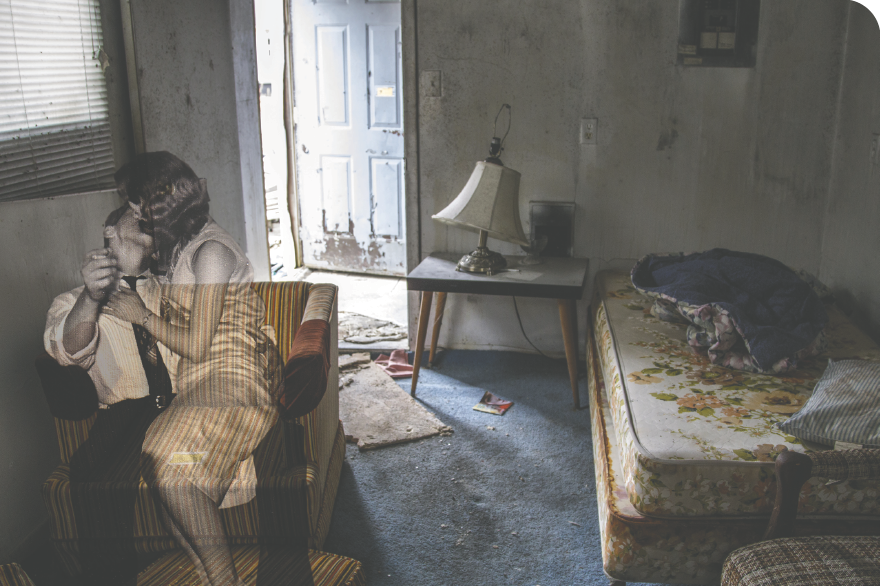
It began as something else — as two discrete projects, actually — that unexpectedly merged into one. And maybe it all began more than a half-century ago, with my Grade 2 teacher, Miss Mills, among whose class exercises included this favourite of mine: she would draw three squiggly lines on a piece of paper, and ask each student to make a drawing that incorporated those lines. The assignment had a vague structure, but relied almost entirely on our imaginations. I could do those drawings all day long.
Fast forward all these years. An inveterate junker, I often drive the highways of Eastern Ontario and Western Quebec, dropping into flea markets, junk and antique stores and thrift shops, looking for curiosities and ephemera that catch my eye. Shop owners ask if there’s anything in particular I’m looking for, and I just shrug. “Not until I see it.”
But old photographs always fascinate me. Black-and-white chronicles of people’s lives: first days of school, new cars, old weddings, growing children, longtime lovers. Happy times and special occasions, mostly. Holidays, picnics, work parties, the beach. It all gets documented, carefully placed in albums, and then, one day… thrown out or sold to strangers, to me. I hold these fragments of memories in my hands and try to piece the stories together. Whose birthday was it? And what happened immediately after this picture was taken? And what happened long after? What became of the girl blowing out the six candles on her birthday cake? Was hers a long life well-lived? Or did tragedy or poor choices deal a different hand? How did these photos come to be in a thrift shop? Did the person in the pictures eventually run out of people who cared about her? The answers are unknown, of course, beyond any explanatory shorthand that might be written on the back: “Uncle Bill, Westboro beach, 1915.”
And so I, and you, make up the stories to fill in the spaces. They’re inaccurate, incomplete, but our mind’s eyes are trained to fill in the areas we can’t see, and so we invent. We invent these people’s stories, their lives.
But back to the highway for a moment. In between the junk shops, we pass towns and farms and fields, many dotted with abandoned and empty houses and businesses. If you stop to explore, you can often find bits and pieces of similarly incomplete stories: an old tube television in the corner of a living room. A kitchen sink filled with dried, cracked dishes. A bare mattress, sagging in the middle. I would stop and photograph these places to remind myself that they were once vibrant homes and workplaces that echoed with love and happiness, with despair and anger. Success and failure, whatever those mean.
It occurred to me that the people in the photographs are, in a general sense, the ones who once filled these now-empty spaces. So with Ghosts of the Highway, I’ve re-populated the abandoned spaces and, in the process, perhaps created new stories. Or at least the beginnings of new stories, the first squiggles of something. It’s up to the minds’ eyes of viewers to imagine the rest.
Ghosts of the Highway will be exhibited at Concave Gallery in Perth from August 2–31. Find Concave Gallery in Code’s Mill, or online at <facebook.com/concavegallery>.
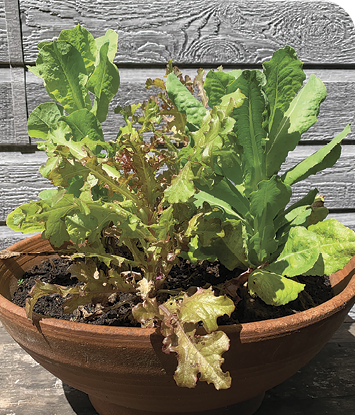
The heat-hating plants such as arugula and spinach have long been in the rear-view mirror, and the heat-lovers such as tomatoes, peppers, corn and squash are coming on gangbusters. Does this mean that hard-core salad lovers are out of luck? Not at all! Mother Nature is happy to give us a second chance.
I have written more than a few times about the possibilities of planting cool weather vegetables for a fall harvest. Mid-August generally signals the end of the heat of summer with cooler nights and generally lower daytime highs. For plants that are frost-tolerant and that prefer cooler growing conditions (think lettuce, arugula, spinach and other greens), the growing season may well extend past the end of October. Mid-August is probably the best opportunity to plant greens for fall harvesting. These vegetables will grow lush and succulent and there is no danger that they will bolt and try to produce a flower.
Gardeners know well the frustration, in our climate, of trying to grow vegetables that do not tolerate heat. Our spring can be incredibly short, with snow still on the ground at the end of April and 30-degree temperatures by late May. Even with a very early start, lettuce and spinach will “bolt”, that is, produce flowers when temperatures climb above 20°C, resulting in bitter unpalatable leaves. Some plants such as peas, broccoli, cabbage and turnip grow quickly in cool temperatures and practically stop growing in the heat of the summer.
August may also be a period when a lot of valuable real estate becomes available in the vegetable garden. Growing space may be available where garlic, lettuce, spinach, peas, and early onions and potatoes have been harvested. The garden thus becomes much more productive as we have more than one harvest from the same plot of land.
Serious (perhaps obsessive) gardeners go at least one step further — planting cold-tolerant greens such as spinach, radishes, lettuce and arugula in Hoop Houses, cold frames, tunnels, row covers and raised boxes. For those with large Hoop Houses (basically an unheated greenhouse), some veggies such as spinach and some lettuces overwinter and are producing abundantly by the end of March.
In addition to the usual suspects in the “greens parade”, I have had great success with Mizuna (Brassica japonica). It is a Japanese green with broad, serrated leaves and white ribs. It is a vigorous plant with good cold tolerance. The light green leaves are very juicy, tender, and have a nice flavour.
Some vegetables such as radishes can produce edible roots in as short a period as 20 to 25 days. Others such as lettuce, arugula and mizuna can produce edible leaves as quickly as 30 to 40 days.
Many leafy greens can be sheared down almost to ground level, without the root being disturbed, and they will turn right around and re-grow additional leaves for your next harvest. It is possible to enjoy at least three or four harvests from each planting. This technique is often termed cut-and-come-again harvesting. You can go from sowing the seed to your first harvest in just a few short weeks. Vegetables raised as cut-and-come-again crops can be planted much closer together than you normally would, since the veggies are not going to be maturing into full-sized plants before harvest time.
For those that have been practicing succession planting, early August planting may still be feasible. Succession planting is simply spreading out the planting and the harvest — for example, rather than planting all of the beans or beets at once, plant some every two weeks or so, thus spreading out the harvest over an extended period. This can continue over the summer. Obviously, this works for vegetables such as beans and beets that have a relatively short growing time between planting the seed in the ground and the first picking. The average bush bean takes about 50 days from seeding until harvest (beets 55 to 60 days). Given that the weather will likely start to cool off considerably by mid-September, I will want to plant my last crop of beans around the first of August.
Rigid adherence to a specific planting date may not be wise. Mother Nature can be capricious; for example, nothing will grow if we are in the middle of a drought. While there are rules, charts and no end of recommendations for planting, there is nothing wrong with a bit of experimentation.
Many experiments are possible. I have tried potatoes planted around the first of August with limited success — good if you like “baby” potatoes. The challenge is to find seed potatoes in August. An early variety such as Irish Cobbler might produce a reasonable crop in sixty days. Some gardeners are planting their potatoes late in an attempt to escape the ravages of the Colorado potato beetle. However, August is really pushing it!
Nature really does not like bare soil and generally will move in to cover it, often with plants you may not wish to encourage. August is a good time to plant a cover crop such as buckwheat or oats. They will be killed by frost and can easily be worked into the soil to add nutrients and structure. If you are moving to low-till or no-till, next year’s crop can be planted into the crop residue.
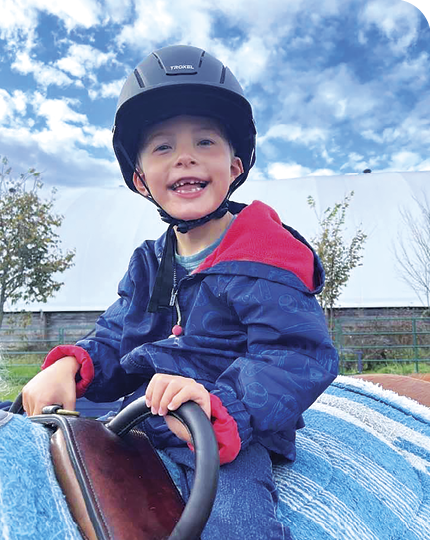
The Perth & District Community Foundation (PDCF) is turning twenty. To celebrate this special anniversary, the PDCF will be hosting a free Let’s Celebrate Our Community event with special guests Juno award-winning singer-songwriter James Keelaghan and acclaimed fiddler Jess Wedden. This celebration will take place on Sunday, September 11 at the Crystal Palace in Perth. We contacted President Ron Heesen to find out more about the organization and their plans for the future.
The Humm: We’ll talk more about the community celebration later. To start, what is the Perth & District Community Foundation?
Ron Heesen: PDCF is a charitable public foundation dedicated to strengthening the quality of life in Perth, Drummond/North Elmsley, Lanark Highlands, and Tay Valley. We address community needs and opportunities through grants to registered charities.
What was the initial spark that resulted in the creation of the Foundation, and who was involved in the beginning?
As the story goes, one day in the fall of 2001, Bryce Bell listened to a CBC radio interview with Barbara McInnes, then President and CEO of the Ottawa Community Foundation, and thought “we could do that”. Being a man of action, Bryce invited a few community leaders to a breakfast meeting. One meeting led to another. The founders — Howard Allan, Greg Anderson, Bryce Bell, Fred Ladly, Wanda MacDonald, Gavin Marshall and Richard Schooley — filed the requisite documents and the PDCF became a registered charity in October of 2002.
There are many local charities in this area, with diverse goals and purposes. How does the PDCF fit into the mix?
We are different from other charities in that every donation is pooled with other donations into a permanent endowment fund and invested. Money earned from the investments helps grow the fund and allows us to give grants to support projects in our community. This way, every donation keeps giving. One of our goals is to keep growing our endowment fund so that we can increase our support to local charities, and thus do more to strengthen our community.
What are some of the notable successes that stand out over the past twenty years?
The very fact that our founders shared a vision of the long-term benefits of a community foundation for our community is a success unto itself.
The growth in the Endowment Fund is another success. The Founders dreamt of a day when the Fund would reach one million dollars. Well, we reached that goal in 2013. Today, the PDCF has over five million dollars in its endowment fund. That’s a result of the hard work of our volunteers and the generosity of our donors. In addition to those who make monthly and annual donations, there are a number of individuals and families who have set up their own fund. We have also been fortunate to be the beneficiary of those who have left money in their estate to the PDCF.
We are very proud of the cumulative effect of the granting process. Between 2003 and 2020 we gave out $1.5 million in grants to local charities benefitting children, youth, seniors and families in Perth, Drummond/North Elmsley, Lanark Highlands and Tay Valley. Today, we grant over $200,000 each year. To illustrate, let me tell you about one grant: last year we made a grant to the ConnectWell Therapeutic Riding Program to purchase a new horse. Just thinking of the impact of that program, the staff and volunteers who run it, and the children and adults who benefit from it gives me goosebumps.
In 2015, we facilitated the creation of the Community Alliance for Refugee Resettlement, also known as CARR. Over four years, the CARR helped 25 adults and children, whose lives had been torn apart by war and oppression, find their way successfully into our community and into our hearts. Today, CARR 2 is raising money to sponsor two young refugee families from Afghanistan. The PDCF is helping this endeavour by accepting donations on behalf of CARR 2.
Recently, we made a commitment to reconciliation between Indigenous and non-Indigenous Canadians. We’ve entered into a partnership agreement with Indspire, a national Indigenous charity, to establish the annual PDCF Indigenous Youth Award for an Indigenous student enrolling in an apprenticeship, college or university program. Preference will be given to an Indigenous student from Lanark County. As a result of this partnership, our annual contribution of $2,000 will be matched by Indspire. We invite community members who have been wondering what they can do to contribute to reconciliation to make a donation to this award.
In a nutshell, who is eligible for PDCF grants and how do they go about applying?
Grants are made to charities registered by the Canada Revenue Agency (CRA) or other qualified donees as defined by the CRA (a municipality, a school board etc.) Projects must directly benefit the residents of Perth, Drummond/North Elmsley, Lanark Highlands and Tay Valley. We encourage qualified charities to apply for a grant this fall. The grant window for 2023 will open in October. For information on how to apply, visit <pdcf.ca> and click on the Grants button.
Is the organization seeking volunteers or other types of support?
We are always seeking community support. We welcome community members who volunteer to sit on committees, and we have openings to join our Board every year. If you’re interested in getting involved, please call our Executive Director Victoria Gibb-Carsley at 326–0295, or email <pdcf@bellnet.ca>.
Please tell our readers more about the concert taking place on September 11. What can people expect, and how do they go about getting tickets?
We can’t think of a better way to celebrate our 20th anniversary than by gathering with members of our community and enjoying the music of local performers. Our special guests are Juno award-winning singer-songwriter James Keelaghan, and acclaimed fiddler Jess Wedden. As you arrive, you will hear Casey Cerson playing the bagpipes. The Lanark Drum Circle will open the gathering with the Welcome Song.
Maximillian’s is serving free light refreshments and there will be a cash bar with Perth Brewery beer and Pelee Island wine. We are thankful to Maximillian’s, the Perth Brewery and Pelee Island Winery, all of whom have donated door prizes.
Free tickets will be available as of August 1 through Tickets Please (ticketsplease.ca, 485–6434).
Do you have any closing comments?
I wish to invite people to learn more about the PDCF by going to our website, by phoning our Executive Director Victoria Gibb-Carsley at 326–0295, or by emailing us at <pdcf@bellnet.ca>.
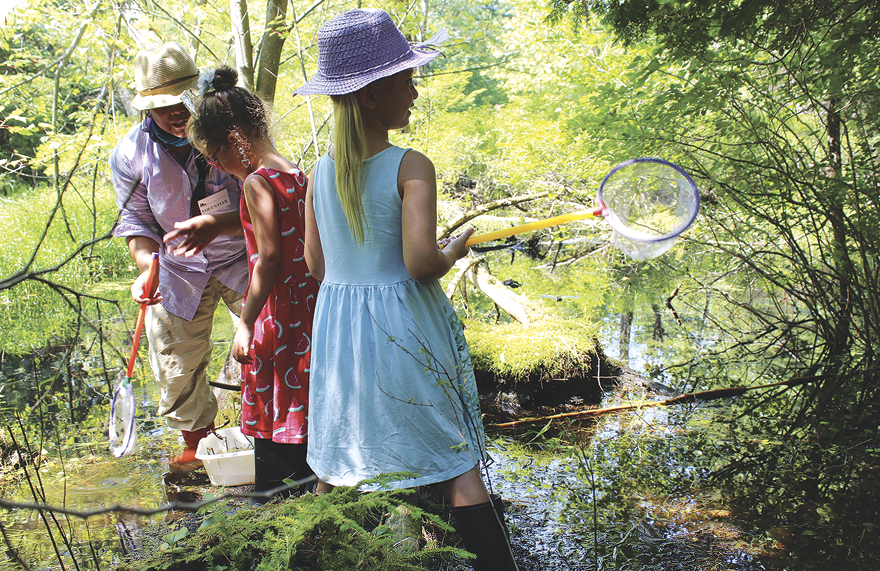
The Mississippi Madawaska Land Trust (MMLT) invites you and your family to High Lonesome Nature Reserve for their annual Festival of the Wild Child on Saturday, August 27. This popular nature-themed family event is a fantastic opportunity to experience outdoor fun along the wooded trails, beaver ponds and butterfly meadows.
To make the event safer amid the pandemic, the last two years featured special scavenger hunt editions of the Festival of the Wild Child. These hunts were such a hit that organizers have not only kept them for this year’s event, they’ve also added naturalist-led Nature Walks and brought back Nature Stations. This year’s activities include: Magical Fairies (scavenger hunt), We All Live Here (scavenger hunt), Life in the Pond (activity station), What are the Sounds of Nature? (activity station), Pollinators Path (discovery walk) and How Big Storms Create New Forest Habitats (discovery walk).
Event admission is still FREE for children under 18 years, while adults are required to pay $10. Of course, donations are always welcome! Participants are encouraged to pre-register and you can do so starting July 30 at <mmlt.ca/events>. Visit the same webpage for up-to-date event information, including information on the rain date (August 28) if the weather doesn’t cooperate!
Please ensure that you bring water, sunscreen, appropriate footwear and some snacks to take along with you on this fun-filled day. And of course be ready to explore, learn from the in-house experts, and make memories!
High Lonesome Nature Reserve is located at 867 Carbine Road near Pakenham. It is one of MMLT’s most popular properties, boasting an incredible diversity of plants, animals and habitats that are representative of the local ecology.
The Mississippi Madawaska Land Trust is a local charity dedicated to preserving wild landscapes and committed to providing events like the Festival of the Wild Child that engage the community with the wonders of nature in a wilderness-like setting.
Be a Wild Child. It’s in your Nature!

A garden shed, 100 small floral paintings, and a solitary viewing experience.. these are the elements that will play off each other in an art installation titled Mother. Conceived as a contemplative space to reflect on the theme of loss, the paintings make specific reference to one important woman in artist Jennifer Zeitz’s life — her mother who died during Covid.
Why a garden shed? “My mother’s garden was her refuge. Like many women of her generation, she found time to nurture plants and cultivate beauty as well as raise children. There has never been a more critical time to connect with things that can bring us peace,” says Jennifer.
Jennifer, and others, lost a loved one during a time that was unique in everyone’s experience. Those of us who didn’t lose a family member during Covid are lucky, for sure, but we all share part of Jennifer’s grief — those losses and that grief imposed by the context of the pandemic.
We all have had tremendous and less tangible losses over the last couple of years. We have lost our world and our place in it. We have lost our sense of safety. We have lost a good degree of control over our lives. We can no longer count on our future hopes, expectations and dreams. We lack direction and the sense of purpose we had. We have lost our sense of security. Some of us no longer have a sense of financial security due to unemployment, and others have lost faith in an overstretched, broken health care system. We are not the same people.
As we shoulder the grief of these losses, we have also missed what normally eases loss and gives us the strength and courage to move through grief: the ability to connect with a support system, see family in the ways we cherish, interact with other people, and feel the comfort of their presence and their love.
Jennifer has created a beautiful, contemplative space on the theme of loss. It is a different way of reflecting on our grieving process, in keeping with our different reality. We all carry an unusual combination of losses, and we need different ways of grieving. Jennifer’s installation gives us that as we sit and reflect on our own losses, in the context of Jennifer’s expressive representation of how she experienced the loss of her mother during the pandemic.
“The arts have always been great healers,” says Jennifer. “Like gardening or singing in a choir, there are pursuits that by their nature ground and transport us. My hope is that people will find some hope and light in this space.”
The installation is meant to be experienced in solitude. The garden shed will be open from Thursday through Sunday from noon to 7pm throughout the month of August. Access will be off Colborne Street down a quiet lane. Please follow directions posted at the front of 66 Farm Street in Almonte.
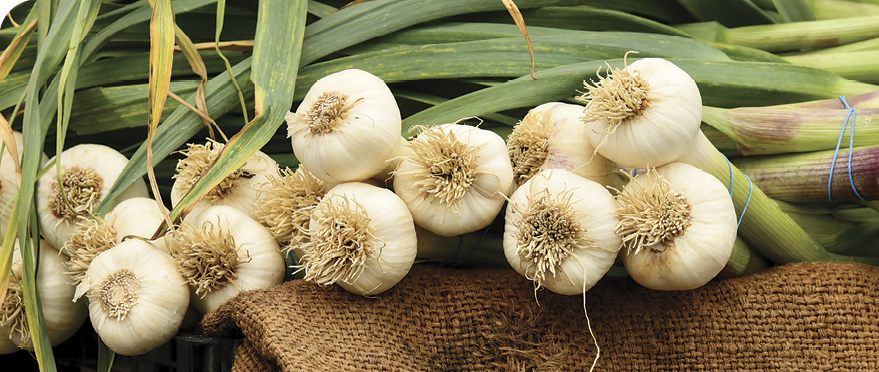
The Perth Lions Garlic Festival is thrilled to announce that the 23rd annual Garlic Festival is a go! After having to cancel the festival for the last two years due to Covid, the Committee is putting together what they feel will be one of their best events yet. They will be highlighting vendors (many are returning), birds of prey, music, food, fun, and of course, lots of garlic! Check them out at <perthgarlicfestival.ca> as well as on Facebook for breaking news and up-to-date information.
Come on out to the Perth Fairgrounds on August 13 and 14 to buy your garlic, catch up with old friends, bring a lawn chair and listen to upbeat summer music featuring The Doherty Brothers on Saturday and Eddy & the Stingrays on Sunday.
Your admission donation of $5 per person will enable the Perth Lions Club to raise funds, in order to meet the many needs of various organizations in and around the community. Children under 12 are admitted free (no dogs allowed, please).
The sky is a deep blue and the fields of soybeans and sunflowers glow in the late afternoon sunlight. My car bounces over a railroad crossing just outside my destination, a small town in the Ottawa Valley. I’m early for my appointment and have some time to kill.
I find some parking along a side street. When I step out of my car, I feel the sting of each gust of wind off the Ottawa River. Strolling back towards Main Street, I notice an old man sitting at the corner, wrapped in a blanket, with a small basket for donations in front of him. I walk by him quickly, not wanting to get involved in someone else’s troubles, and quickly turn the corner onto Main Street.
My eye is caught by the display window of a toy store a block or two along Main Street. There is a recorder-like instrument in the back corner of the window that looks intriguing. I step inside the shop to take a close look. To my surprise, it appears to be a very early example of a Clarke tin whistle with six holes, possibly dating from the 1860’s. Without hesitation, I purchase the whistle for my collection of antique flutes.
The sun is low in the West and casts intricate shadows from the nineteenth-century storefronts. I become so engrossed in these patterns, I nearly walk into a young boy accompanied by a large Labrador Retriever. As the Lab shifts its large body to protect the boy, I twist quickly to the right and lose my balance. Pain shoots through my palm as it scrapes over the rough surface of an old brick storefront. The Lab breaks my fall and I find myself sitting in a pile of leaves.
I feel a rush of gratitude. Apart from the scratches on my hand, only my ego is seriously bruised. Suddenly there is a wet, sloppy something on my forehead and the boy shouts “Rambles likes you! He only licks the face of people he likes.” The breath of the dog permeates the space around me. I inch my way backwards through the pile of leaves, glad that their autumn essence dilutes the smell of dog. Feeling the wall against my back, I am able to pull myself up to standing.
I pause to catch my breath and take in the dog and his boy. The Lab looks somewhat underfed and the boy is positively skinny. The child’s threadbare cotton sweatshirt is loosely tucked into a pair of jeans at least one size too large. The number of patches indicates a hand-me-down more than once. The phrase “the other side of town” comes unbidden to my mind. I acknowledge the thought, but make a conscious choice to ignore it.
“I’m Gerald. What’s your name, young man?” I ask as I vigorously brush leaves off my pants. The boy hesitates, then replies “I’m not supposed to talk to strangers, but, if we get to know each other, then we won’t be strangers anymore, will we? I’m Jake.”
“You know Jake, your dog, Rambles, is one very intelligent animal. I don’t think he would ever let anyone to hurt you. Do you think he knows where there are toy stores in this neighbourhood?”
As another gust of wind chills me to the bone, Jake blurts out “Dogs aren’t interested in toy stores. But the butcher shop usually has a scrap of meat for him. I like the toy store in the building next to the butcher shop.” Then Jake leans over and whispers into Rambles’ ear: “Meat, boy, go find it.”
Rambles shakes himself once and begins walking rather slowly down the sidewalk. I follow along a few steps behind them, back towards Main Street. At one point, there is a broken piece of sidewalk and Jake stumbles slightly as his toe hits the obstruction. Jake is so engaged in gazing at each store window we pass, he lets Rambles worry about the path.
As they turn the corner onto Main Street, I see the toy store and the butcher shop next to it. Rambles speeds up his pace and Jake has to work to keep up. In no time, the two reach the butcher shop and Rambles lets out two sharp barks. A minute or two later, a heavy-set man in a long, blood-stained apron comes to the door, greets Jake warmly, and drops a small piece of meat on the edge of the sidewalk. In a flash, Rambles gobbles it up, as the butcher slips Jake a Kaiser bun.
As we walk away from the butcher shop, Jake comes to a sudden halt. Jake is peering into the toy store window and exclaims “What happened to the tin whistle? I had a tin whistle a couple of years ago, but it was lost when we had to move.” I slowly pull the whistle from my inside jacket pocket and show it to Jake. “Is this the whistle you’ve had your eye on? If you can play me a tune on it, it’s yours.”
Jake’s eyes widen. He takes the whistle with great care from my hands, examines it carefully, and exclaims “This whistle is a bit shorter than the one I had.” Nonetheless, he puts it to his lips, and begins to blow into it. After a couple of notes, Jake stops. With a catch in his throat, he says “I can’t play you a tune. These notes are too high. It doesn’t sound like my old whistle.”
I say softly “Relax, Jake. This whistle just has a different key. The fingering is the same as the one you had.” Jake doesn’t look convinced, but he begins to play again. And indeed, it is a rollicking tune that pours forth.
There are only a few minutes before my appointment, so I tell Jake “The whistle is yours. That’s the best tune I’ve heard in a long time. But I have to go now.”
Jake puts his tin whistle in his pocket and heads off with Rambles. I watch as Jake pauses in front of the beggar at the corner. Jakes breaks his kaiser in half and shares it with the old man.
I wait a couple of minutes until Jake and Rambles leave. When they are out of sight, I walk over to the old man, wish him a good evening, and drop the same amount into his basket that I had spent to buy the tin whistle.
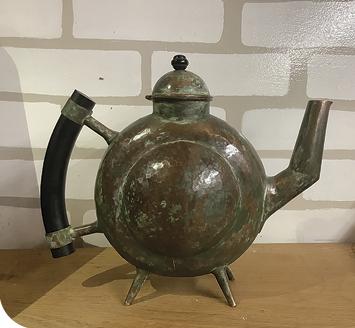
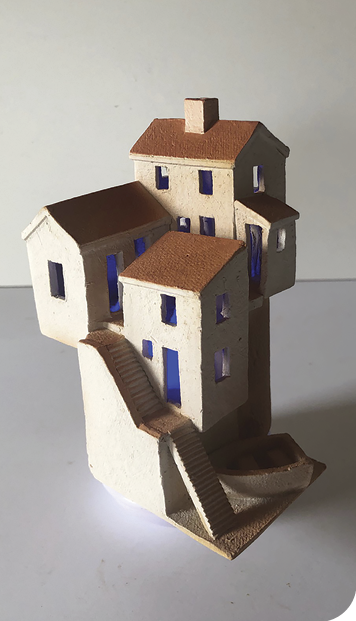
Half a century has passed since artist/sculptor Richard Gill, his wife Jacqui and infant daughter Erin rolled through the hamlet of Burnstown driving a 1968 Volkswagon camper, and stopped to change his daughter’s diaper. They noticed an old log house for sale. A phone call later, a deal was made, and the family moved lock stock and barrel from their city home in Toronto. Richard never looked back.
Little did he know the boarded-up former tavern/stoppin’ place without plumbing or electricity would become his lifelong home and ceramic studio where he could and would in fact earn a living working his passion in clay.
Richard stayed on, even when tragedy struck and his wife was killed on an icy morning drive to Arnprior where she often taught. He stayed, and with the help of neighbours, friends and patrons he persevered through the emotional hardship of grief and loss as well as the physically demanding hands-on work of mixing his own clay body, and labour-intensive wood firing. It is rewarding work that grounds him to this day. From pots to plaques, his work evolved into the detailed original one-of-a-kind sculpted clay-relief wall pieces that he is so well known for today.
Every year since, he has created and shown a completely new body of work, with themes inspired by his local surroundings, travels further afield, or requests for custom work.
The theme of this milestone 50th anniversary show is “artist’s choice” — encompassing primarily Canadian content, the Ottawa Valley, as well as Newfoundland and Mexico. In addition, to mark this milestone Richard has created fifty architectural lamps, shedding light (so to speak) on a remarkable half-century of creations.
Springtown fine metal artist David Ivens returns as an invited guest to join Richard, with high hopes of exhibiting experimental collaborative works in metal and clay. They are in progress as of this writing, so the outcome remains to be seen!
This milestone show will run primarily on the grounds of Bittersweet Gallery, as well as indoors, from August 20–28. Opening day festivities include opening remarks by Richard, live music and light refreshments. Find directions and more details at <burnstown.ca/bittersweet>.
The Smiths Falls Heritage House Museum, located at 11 Old Slys Road, will be hosting a “Rideau Artist of the Year” event on Saturday, August 6 and Sunday, August 7.
Both artists and the public are invited to the picturesque grounds of the museum, Old Slys Rapids and Lock Station to create an original work of art that captures the beauty of the Rideau Canal in Smiths Falls. This location showcases a beautiful stone train bridge, rapids, natural wildlife, built heritage and of course the Rideau Canal — a UNESCO World Heritage Site where transportation heritage meets the natural landscape.
In the tradition of en plein air, artists from the region will be creating works, live and outdoors. This competition is open to artists of all media. Artists will have the weekend to complete an original work of art and submit it to the museum’s gallery, where a jury of art professionals will review submissions and select one winner to receive a prize of $1000 and the title of Rideau Artist of the Year. The prize for the competition has been sponsored by TD Bank Group.
Submitted pieces will be displayed, where possible, in the museum’s gallery until Saturday, October 8, in a showcase of local talent.
The public is invited to join in the fun, admiring the artists at work and the beautiful grounds. Family-friendly activities will be taking place, and on August 6 an artisan market will be hosted by the Smiths Falls and District Arts & Culture Council, from 9am to 4pm. For information about the market or to register as a vendor, please contact <smithsfallsarts@gmail.com>.
For more information about the competition or to register, please contact the Smiths Falls Heritage House Museum at 283–6311 or by email at <heritagehouse@smithsfalls.ca>.

Celebrating its 16th year, the Sundance Artisan Show invites you to spend time in a beautiful riverfront setting with local artists in Maberly, Ontario over the Labour Day weekend.
Peppered across two acres of forest, field and riverfront will be a large and diverse group of artisans specializing in various art forms: pottery, wood, sheet metal, stained glass, artisanal soaps, fibre art, jewellery, clothing and blown glass, to name a few. The artists have been working hard over the year and are ready to present to you their wonderful creations. The setting is ideal for relaxing while shopping for the perfect gift for that special someone. Feel free to grab a chair and enjoy sitting by the beautiful Fall River with old mill ruins. Parking and entrance are both free.
The show will be open all three days of the September long weekend (Sept 3, 4 and 5). Hours are 10am to 5pm on Saturday and Sunday, and 10am to 2pm on Monday. Sundance is located at 126 Maberly Elphin Rd, Maberly, at the intersection of Highway 7 and County Road 36. Free accessible parking next to the entrance is available, service animals are welcome, and most booths are wheelchair accessible. Further details, as well as images of work by participating artists, can be found at <sundancestudio.ca>.
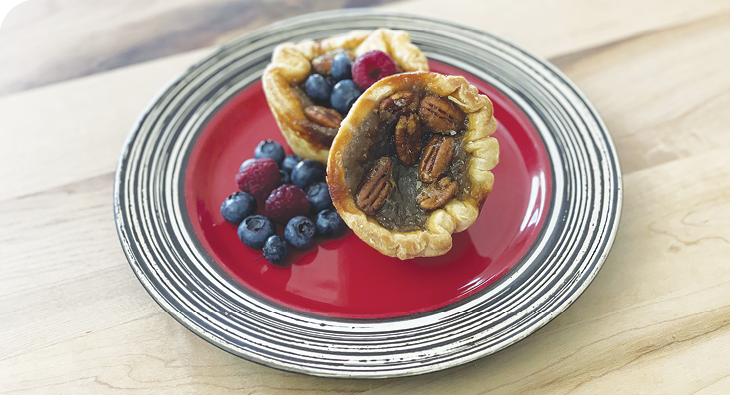

Butter tarts are up for the tasting as bakers vie for awards in “Traditional” and “Wild” categories in this first annual butter tart competition. In other words, anything goes for this iconic Canadian dessert, which first appeared as a recipe in 1900 in Barrie, Ontario. Judging will take place from noon to 1pm during the day-long Tarts and Arts Festival, taking place from 9:30am to 4pm on Saturday, August 27 and featuring something for everyone in beautiful Robert Simpson Park in Arnprior.
Artisans Black Walnut Worxx, Little Bird Knit, Picnic Bears and Friends, Lori Jensen Jewelry and many others will be selling their wares, alongside the Arnprior Humane Society with birdhouses and the Men’s Shed with an assortment of products. Arnprior Library and Archives and the Arnprior Museum will have displays.
The festival will also feature performances by Main Street Music and the Arnprior School of Dance. Children will thrill at Little Ray’s Reptiles show from 1–2pm, and enjoy games, face-painting by BugABug, as well as the park’s vast playground and splash pad. More surprises are in the works, to be expertly revealed by Jason Marshall of Valley Heritage Radio, Master of Ceremonies.
Admission to this family-friendly festival is free, thanks to sponsors RONA, M. Sullivan & Sons, Giant Tiger, M&M, No Frills, Metro, Under My Roof, Milliken Landscaping, Big Rig Bakery and other supporters.
And yes, there will be butter tarts for sale! How sticky-sweet it is! Tarts and Arts is hosted by the Rotary Club of Arnprior. For further information, please visit <ArnpriorRotary.ca>, find them on Facebook, or call 623–6726.
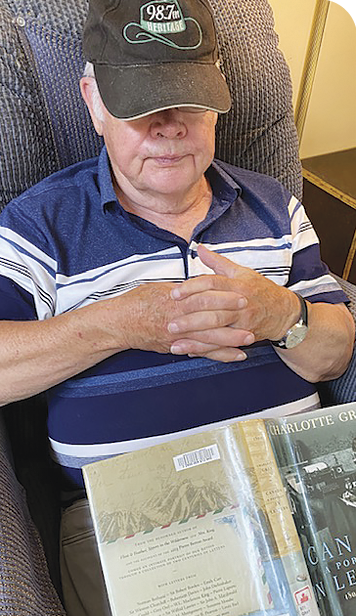
We’re into August. We need to relax and regroup for the onslaught of September, so it’s time to take a serious look at frittering. This activity is not to be taken lightly. After a season of busyness, which included getting to the cottage, or getting to the back yard, or getting the garden into some semblance of recognizable plant material, you must now be exhausted and need some respite to call your own. Okay, frittering time it is.
Firstly, frittering occurs on the day when you think you have a lot to accomplish, but because you start late, that doesn’t happen. You have a second cup of coffee, work on the crossword puzzle until you can’t solve it, toss it aside, see it’s now past 9am, and suddenly the day is dissolving. It’s already too late to go to the dog park, so a short woods walk will have to suffice. If you try to be productive by taking the clippers to cut upstart saplings on the path you will look serious, but we all know that will be thwarted by mosquitoes. And hey, are you hearing the hermit thrushes singing? Let’s stop and listen to their trills for a while. The dogs don’t mind as they’re always busy with undergrowth stuff. Not productive — but kinda nice, right?
There’s an hour shot. Now you’re at the crucial time between too early to do a major chore and nearly lunch, but still an hour to be productive. Let’s sort the recipes that are stacked in the corner. Hmm, that one is good to save; that one, not so much. You should cut them out and put them in the recipe file. (A photo album is an excellent recipe file. But you need a system, not simply, “I’ll keep this and put it in a category later”, which is my go-to. Not very successful.) As the time ticks closer to noon, you have a pile of stuff to keep, some to toss, and not one in the album. Maybe later…
Lunch beckons, but sandwiches are so much work, you should settle for crackers and cheese instead. You could add a dill pickle if there were any, but alas, not to be. There now, lunch finished, but dishes still in the sink. On to accomplishing something significant. There’s a box of stuff that should go to the Hub, so a quick run to town will make the day feel useful. While you’re there anyway, maybe you should run into one of your favourite shops and see if there’s a sale, and oh, what do you know! There’s a friend you haven’t seen in a million years: chat, chat, and oops, it’s now well past 2pm. A quick shop for shoes would be worthwhile, wouldn’t it? If you find something, that’s not frittering, that’s genuine shopping. Enough of this, time to head home.
But just as you get home, you hear that your cheese shop order at Pêches & Poivre is ready, so back you go into town to get it, and of course, have a chat with Lise and Sandra and their sweet wee dog. It’s mighty close to 3:30 by now — still time to do something worthwhile. The day can yet be saved!
Do you really think that’s going to happen? It’s only a half-hour until it’s time for requisite “4’s”, that magical hour of wine, cheese and good music before supper. But first perhaps a dog walk and a garden visit will suffice as constructive time use, especially if you pull a couple of weeds on your way past the flowerbed. Don’t do anything that will require garden gloves or the wheelbarrow though.
Dogs and walking provide the perfect self-deception against frittering. It’s training; it’s exercise; it’s forest bathing. Whatever… it’s a half-hour when you can lollygag along the trails and smell the green overhead, the lush forest floor beneath your feet, and watch and hear all that the woods serve up.
By the time 4’s are done, the day’s nearly gone, only dinner to prepare, and isn’t this the night to have frozen something? Joe’s Italian Kitchen pizza is calling for a nutritious nearly-homecooked supper. It would be fruitless to pretend that preparing a super supper would rescue this day of complete frittering, so embrace it as the nothingness it was, and move on. Perhaps tomorrow will be better.
If you feel guilty about this completely non-productive day, you can call it creative thinking when you rest your brain and let your imagination take over and simply gestate new ideas for the future. Who knows what brilliant creations you’ve cooked up on this glorious day when you’ve done nearly nothing that you can write in the garden journal?
Here’s a secret for you: the productivity police aren’t lurking behind you and recording your every move. Some days you will be energized and do double duty and some days you will simply veg out and get ready for the next onslaught. Love those frittering days. They don’t come around often, and when they do, they’re gifts. Love your family, love your pets, and above all love yourself and luxuriate in time spent as you wish. That’s not frittering, that’s living!
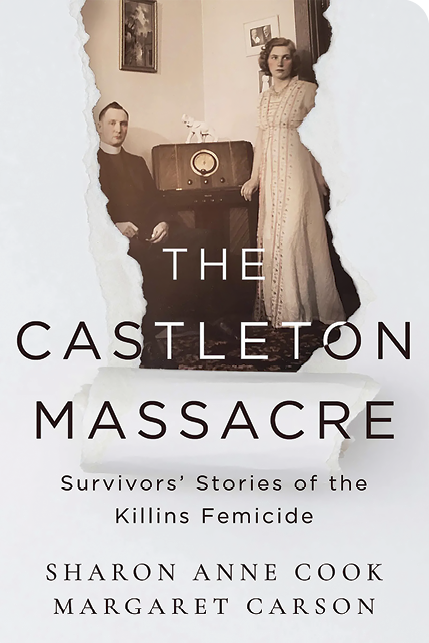
On the evening of May 2, 1963, in the rural hamlet of Castleton, Ontario, a former United Church minister murdered every woman in his family but one. What led to this femicide, and why were its victims forgotten? Authors Sharon Anne Cook and Margaret Carson (who was one of two survivors of the tragedy) set out to answer those very complex and difficult questions in their important new memoir, The Castleton Massacre: Survivors’ Stories of the Killins Femicide.
The book draws heavily on the oral histories of the two survivors, their family members and witnesses in the community to trace and uncover the causes of a femicide in which four women and two unborn babies were murdered. This family memoir, told through vivid first-person accounts, explores how a murderer was created and how the two traumatized child survivors — Margaret and her brother — found their way back to health and happiness. While honouring the female victims of this unthinkable tragedy by telling their stories, The Castleton Massacre, as award-winning author Jane Urquhart points out, provides “an urgent call for action regarding the many Canadian women and children who are still living with violent domestic abuse.”
Sharon Anne Cook and Margaret Carson collaborated to graciously respond to my questions about their new book.
John Pigeau: It would likely be an understatement to say that The Castleton Massacre must have been a very difficult book to write. Clearly it was important for you to do so. Perhaps you could tell our readers why you felt compelled to write the book?
The authors: After 60 years, we wanted to honour the forgotten female victims. The majority of those we have spoken to have said the same thing: “We have never heard of this Canadian tragedy.” Femicide has a long invisible history and is usually kept under a dome of silence. We also wanted to clarify certain assumptions made at the time that somehow the victims had some fault in these murders. We are troubled that in the case of mass murders generally, and femicides specifically, if anyone is remembered, it tends to be the perpetrator. We resisted this tendency by providing full profiles for the victims as well as for the perpetrator. The memoir explains the complexities leading up to May 2, 1963, by personalizing the history.
How did writing the book impact you?
The research and writing of this memoir definitely generated every emotion along the way. Yes, there were many moments of grief, sadness, shock, anger and outrage; but there were the occasional moments of surprise and light humour concerning a detail or circumstance about family history. After completion, we believe that this memoir will answer many questions for our future generations and for the public more generally. Of course, the emotions experienced were far more intense for Margaret than for Sharon, who was not a part of the massacre. The impact on a non-participant like Sharon was still very powerful, as we are told is the case for readers too.
What do you hope readers will take away from reading The Castleton Massacre?
We hope that readers will come to know to some degree the four victims of this femicide, and the many strategies two of the women used to keep the murderer at bay. We also hope that readers will understand what motivates a murderer such as this one. The perpetrator in this case followed most of the presenting characteristics compiled by the Canadian Observatory for Justice and Accountability in predicting intimate partner homicide. He was a textbook case in many respects, but very unusual in others. We hope that readers will be better informed about individuals they know who really are dangerous, and that some action will be taken before more women are murdered. A tragedy like this brings out the best in some people and the worst in others. This story has its share of heroes and we wanted to profile them for readers.
Some people are aware that the pandemic has led to a distressing increase in domestic violence cases. It seems timely to shed more light on this tragic fact. Is that something you’re hopeful the book will do?
In short, yes. That is a major goal of the book. Domestic violence takes predictable forms, and it has a trajectory that is duplicated over and over as well as in intimate partner homicide cases. In unpacking the story of this massacre, we aim to sensitize readers to that arc, and hope that women caught in violent domestic arrangements will seek help, of which there is much more available now than in 1963.
Elizabeth Sheehy noted that the book “illuminates the lack of supports for abused rural women and the social beliefs about men’s entitlements and women’s duties that bind women to abusers.” Do you think what you’ve illuminated is still true in today’s society as it was in 1963?
We know it is still a factor in our society, and that rural women are more vulnerable than urban women in this regard. In 2020, it was estimated that there were 110,460 instances of intimate partner violence in Canada. 80% of those instances are never reported out of fear of what the perpetrator would do in vengeance. In 2020, there were 93,444 calls to the Assaulted Women’s Helpline. During the Renfrew County Inquest, the problem was termed an “epidemic”. There is no doubt at all but that the problem continues in our society.
Sharon Cook and Margaret Carson will be giving a short presentation about The Castleton Massacre at the Almonte Public Library on Tuesday, August 9, at 6:30pm. The book is now available wherever great books are sold, including your local indie bookshop.
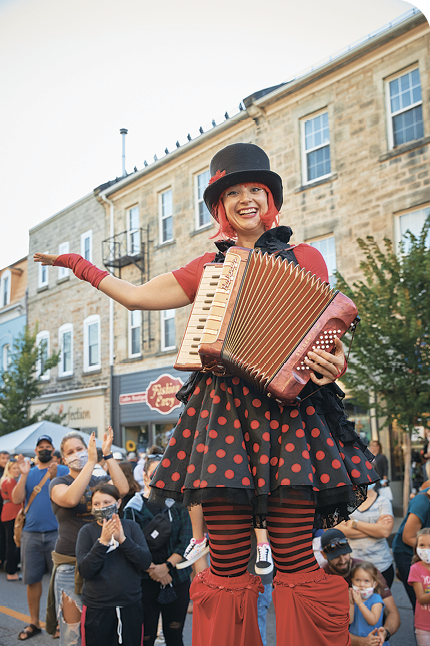
As the summer continues on, so do the incredible events to experience in Perth!
On August 13 and 14, the annual Perth Lions Garlic Festival returns for its 23rd year. Taking place at the Perth Fairgrounds, the event brings together “garlic heads” and producers to promote Ontario-grown garlic and share ideas on how to grow, harvest, market, cook and enjoy garlic. In addition to vendors, you’ll find gourmet cooking demos, wine, beer & liquor tastings, birds of prey and live music (Doherty Brothers on Saturday, Eddy & the Stingrays on Sunday).
The Perth Fair, the town’s longest running event, takes place over four days from September 2–5. Celebrating 175 years, the event features various competitions and contests, entertainment, agility performances, a midway and more.
The end of September brings the third annual Honour Our Veterans Banner Program Weekend, taking place on September 24 and 25. The event recognizes local Veterans, active service members, and those who passed serving in the Canadian, Allied or Commonwealth Forces who have a tie to Perth. Numerous events are held over the course of the weekend, all to promote Remembrance in our community.
Other events taking place throughout August and September include the Glen Tay Block Race (August 25), the Perth Autumn Studio Tour (September 24–25) and the Doors Open events at Perth Museum (September 24–25). The Perth Farmers’ Market continues to run weekly on Saturdays from 8am to 1pm at the Crystal Palace. Be sure to check out Studio Theatre Perth for plays and concerts, as well as the Town’s guided and self-guided tours!
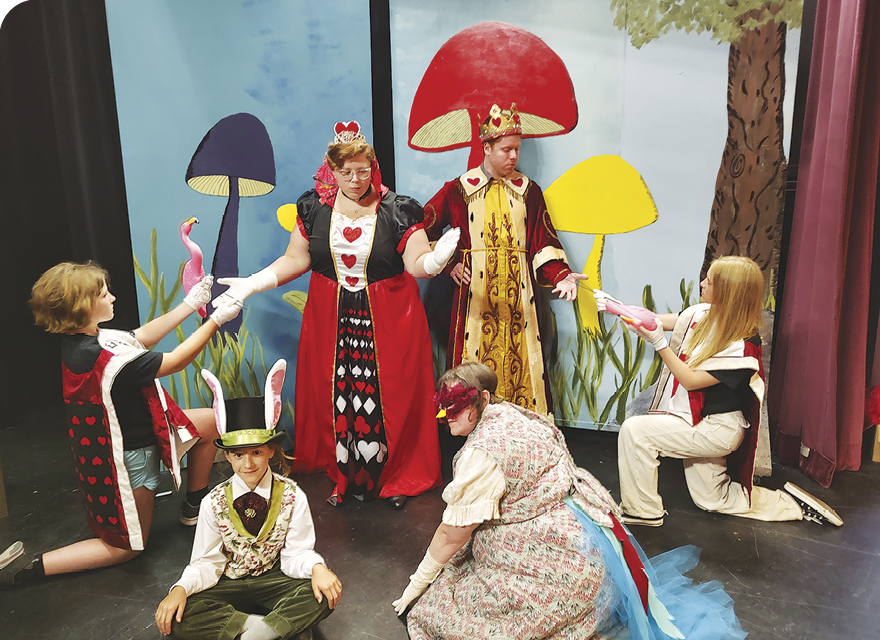
Much has been said, wondered and theorized about Lewis Carroll’s Alice’s Adventures in Wonderland. In the Alice in Wonderland musical (based on Mr. Carroll’s famous story, by Sally Netzel with music composed by Beatrice Wolf), Alice says: “I wish people would be foolish sometimes. That they’d believe silly things, impossible things.” Now, doesn’t that sum things up nicely?
Young Alice, who will be played by multiple actors, doesn’t want to study, isn’t interested in “books without pictures”, and dreams about “going someplace wonderful” — so she does! After following a Rabbit down a rabbit hole, Alice finds herself in a wonderful and strange world indeed. There she meets many strange creatures. There are the Birds, a Caterpillar, a Knave, a Cheshire Cat, the Mad Hatter, the March Hare, the Dormouse, the Court Cards and — last but not least — the King and the nasty Queen of Hearts.
Playwright Sally Netzel has created a script that draws faithfully from Carroll’s original story with a few unique twists. Her lyrics, complemented beautifully by Beatrice Wolf’s score, do a lovely job of telling the story through music as well as adding another dimension to each character. The Rabbit sings about being in a Muddled Fuddle, The Knave sings about Nothing Being Impossible, The Caterpillar tells Alice to Smile through song, and so much more.
The response to the auditions for the show was overwhelming, with so much talent coming forward that it allowed for many of the roles to be understudied, which is such a bonus with a 30+ cast, for many of whom this will be their first time performing in a stage production. 25 members are 18 and younger, the youngest being 9! To have so many young people interested in doing live theatre is — we have to say it — wonderful! Because this is a musical, everyone must learn brand new songs, some choreography, and work with very different props — have you ever tried to play croquet with a flamingo, or sat on a mushroom?? What a feat, you just have to see it!
Now we know from all we’re hearing that the pandemic is still with us, so our theatre will continue to adhere to all Public Health advice and guidelines. At the time of writing this article, mask wearing is not required, but we support each person’s plan to feel safe and secure and so if wearing a mask works for you, please do so. If it doesn’t, that’s okay too. If Public Health rules change, so will ours.
The show runs Friday and Saturday, August 19 and 20 at 7:30pm, with a matinée on Sunday, August 21 at 2pm.The second weekend runs Thursday through Saturday, August 25–27 at 7:30pm, and finishes up with a matinée on Sunday, August 28 at 2pm. Tickets are $20 for adults, $10 for students, and can be purchased with cash at Special Greetings, 8 Russell Street in Smiths Falls; online or by phone (283–0300) with credit card. If tickets are still available, they can be purchased 30 minutes before showtime at the door, with cash. Find more information at <smithsfallstheatre.com>.